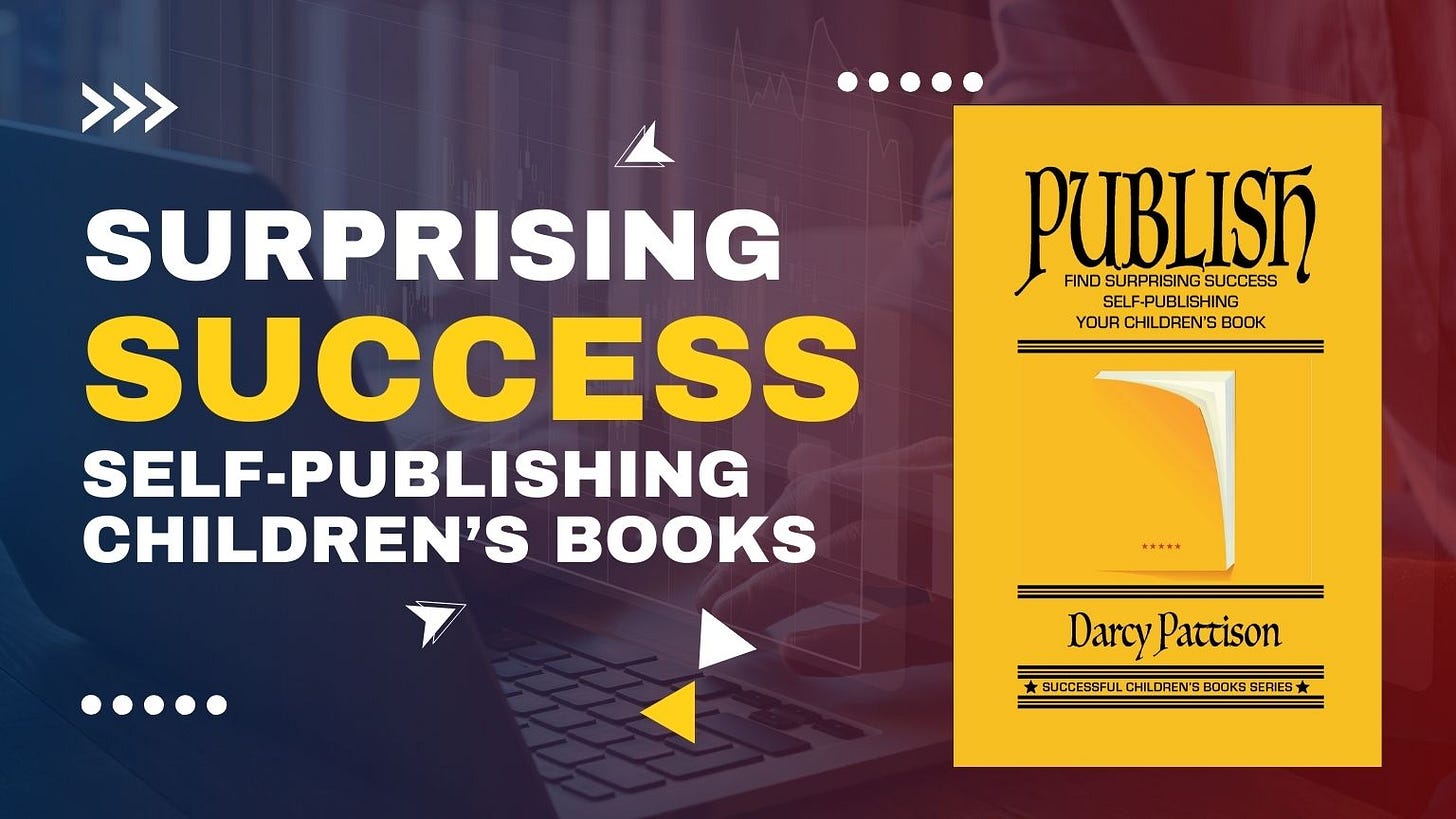Distribution: How Do People FIND Your Children's Book?
Full distribution, POD distribution, or direct?
When you publish a children’s book, you need to know how you will put the book into the hands of a reader. This is called distribution, or distributing the book to the public.
There are three distinct ways to do this: full distribution, POD distribution, or direct distribution. Let’s look at the different business plans possible.
Full Distribution
Full distribution means that you work with a company that distributes across all the book sales channels: education, schools, museums, bookstores, ebooks online, gift shops, grocery stores, airport bookstores, major chains such as Bass Pro Shop, and much more. Any place a book might be sold, a full distributor can reach. That’s their job.
They require a couple things. First, the full distributor wants exclusive rights to distribute your books in all markets. That includes every format, even ebooks, and across all channels. You can’t use KDP for ebooks, or operate a Shopify direct sales store. ALL sales go through them.
They provide help on marketing, working with the publisher on marketing materials and catalogs. One advantage of a full distributor is when they had dedicated sales force that visits major bookstores or educational market clients. Usually, the sales person has a big list to cover, so your book may get a 30-second pitch. But the opportunity is there.
Their timeline is long, so you will be planning 6 months to a year in advance. They need time to do prelaunch marketing, put the book into their warehouse, and so on.
Books must be offset printed and shipped to the distributor’s warehouse. They will “fulfill” which means they will ship to the customer. Major retail chains such as Bass Pro Shop or museums such as Chicago’s Field Museum will only work through a full distributor because they have strict shipping rules for large orders. They usually want pallets delivered to a warehouse with certain restrictions. The full distribution enables you to reach larger, potentially more profitable markets.
The downside? You must order offset printed copies, which can be expensive and tie up your money in inventory. Your book is exclusive with the distributor, and you can’t sell elsewhere. Also, you must accept returns.

Before you sign with a full distributor, you should consider your goals. Which of these aligns with your goals?
I’ve always wanted a book in Bass Pro Shop! (You’re a candidate for full distribution.)
I want to sell from my online store. (Full distribution is not for you.)
My ebooks sell well online, but I only want print distribution. (Sorry, the full distributors won’t take you on.)
If this method interests you, listen to this IBPA podcast about Simon & Schuster’s plan for small publishers. Or look for other distributors who work with small publishers.
Need to know more about the ins and outs of selling and marketing your books? I answer this and much more in the forthcoming book, PUBLISH: Find Surprising Success Self-Publishing Your Children’s Book. It releases in January, 2026.
But you’re in luck!
You can get it in early November when you support this Kickstarter!
Click the image for more information.
POD Distribution
An alternative business plan popularized in the last twenty-five years is POD distribution. In this business model, you sign up with a POD (print-on-demand) company. Your book lives as a digital file on their server until there’s a book order. Then they pull the file, print, AND ship. They do both the printing and shipping in one coordinated move.
Almost anyone can work with the POD companies such as KDP-Amazon, IngramSpark, or Lulu. There’s no upfront costs or minimal upfront costs. The POD company charges you for printing and for distribution (a percentage of the list price).
This is a “limited distribution” because it doesn’t put your book for sale in all the places that books are sold. Instead, it’s limited to online listings, listings in warehouses such as Ingram Wholesale (the largest wholesaler in the U.S.), or international listings across the book industry. For example, when you POD with IngramSpark, your book is automatically listed in Ingram Wholesale, which provides books to bookstores, educational distributors, international markets, and more.
The beauty of the POD approach is the upfront costs are minimal. Instead of thousands of dollars invested into warehouse stock, you are free to invest in the next book to build a list of lucrative books.
The disadvantage is there’s limited access to some markets. Large retailers such as Bass Pro Shop won’t order your books because you can’t fulfill or ship them the books according to their specs.
You’ll find some distributors who offer full distribution, but limit the services offered. Be sure to read and understand all Terms of Service.
Choosing between full distribution and POD distribution comes down to your goals and your finances. Where do you want your books sold? How much can you invest in inventory?
Direct Distribution
If you choose direct distribution, you’d usually do offset printing, find a warehouse, and then go to the store every day to ship books. Or, you may work with a warehouse and fulfillment company who will ship books based on orders. Or, you may have a thriving business at craft fairs and other personal appearances.
You may also search for ways to interact direct with major book sellers. For example, Barnes & Noble has had a division that works with small presses to put books into their stores. They are quite exclusive, and it’s hard to break through. Even if you do, you’d have to deal with shipping and returns.
Or, you may try to establish a relationship with Ingram Wholesale to put your books into this major book sales resource. Again, it’s difficult to stand out in today’s crowded market to get acceptance, and then you must deal with shipping and returns.
Or, you can work with Amazon Sellers, a way to sell through Amazon, especially using Fulfill-by-Amazon shipping. Again, there’s shipping and returns.
Or, I’ve seen author/publishers find a local retail space, perhaps in a flea-market type booth, and sell to a local population. (Yes, shipping and returns again.)
Distribution First, then Marketing
I recently heard an author discussing distribution. They offset printed their book and were busy selling direct through school visits, craft fairs, etc. They questioned why they would give a percentage of their hard-earned dollars to Ingram. What did Ingram do that deserved a percentage of their profits? they wondered.
Well, distribution. Your book is available everywhere you need it to be. That’s a valuable thing that can increase sales and help readers find your book.
Your reach as an individual author is limited by time, energy, and money. You can’t possibly speak 365 days/year! You’d be exhausted. Realistically, 100 days is overwhelming.
Thinking about distribution means you ask your customers, “Where do you buy books?” School libraries will have accounts at the educational distributors such as Follett or Mackin. Public libraries may prefer a company such as Brodart. The grandparents at your local craft fair, though, are perfectly happy to purchase direct from you. Who are your customers? Where do they buy?
Ingram Wholesale puts your books into markets you can’t reach any other way. Of course, just because your book is LISTED in a market, it doesn’t mean it will sell there. That’s where distribution bumps into marketing, and you realize you must have the distribution set up so that when you market the customer can actually find and purchase the book in their preferred marketplace.
The worst marketing would be to reach the right audience with a message that makes them want to purchase the book immediately. But when they go to their preferred marketplace—online or in person—they can’t FIND the book. Your marketing is wasted.
Distribution first, then marketing. Don’t get it backwards and market first, then wail because distribution isn’t there.
If you offset print, you print first, sell later. Dollars are tied up n inventory, but you have a stronger reach through full distribution and/or direct distribution.
If you POD print, you sell first, print later. You accept the marginally lower quality of POD printing, and instead of working to sell one title, you work to add new titles to your list, knowing that each book is a bulletin board for your backlist books.
What are your goals? Can they be met better by full, POD, or direct distribution?


